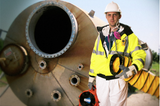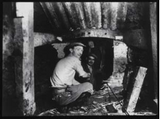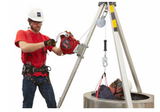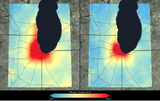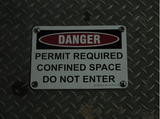Blog
Confined Space Communication Must Be 100% Effective
For effective communication, a message must be sent, received and understood. Sounds simple enough, but when working in a confined space with noise, machinery, and respiratory protective equipment in place, communication can be a challenge.
Confined spaces can also create an echo that interferes with clear communication. If there is an emergency situation, you can add anxiety and labored breath to the equation. All this highlights the need for a clear and reliable confined space communi
…
May 9th 2015
Gas Sensors: How Do Gas Monitor Sensors Work?
The sensors in your gas monitor work in different ways to keep you safe. Some wear out relatively quickly, while others could conceivably last forever. Here is a very quick overview to help you understand basic gas sensor technology. We hope this information will allow you to see the benefits of regular maintenance, bump testing and
calibration.
The most common sensors used in confined space work are Oxygen, % LEL (Lower Explosive Level), Carbon Monoxide, and Hydrogen Sulfide. Howeve
…
May 2nd 2015
Hydration in Confined Spaces
Hydration is often a forgotten element of safety in a confined space. With so many potential hazards during confined space entry, loss of water because of sweating isn't high on the list for many workers. However, hydration is just as important as many of the other safety considerations of a confined space project.
Fluids lost in a hot environment, or because entrants are wearing protective, and non-breathable clothing, must be replaced to help prevent heat-related injuries.
To pr
…
Mar 21st 2015
Entry or Rescue in an Inert Atmosphere
Typically gases such as nitrogen or carbon dioxide are used to remove oxygen from a confined space and render it inert. Often an area is made inert in order to remove the potential for fire, or to stop oxidation of a product within a space and keep it from spoiling. If you are attempting a rescue, or have other need of entry, you must be able to anticipate what changes may result within the space if you return an oxygenated, breathable atmosphere to the area.
To do this, you must
…
Mar 14th 2015
What's The Best Confined Space Entry Tripod?
There are plenty of companies out there who only do the occasional confined space entry. Their definition of the best tripod will likely be very different from a company, utility, or facility that uses their tripod on a daily or weekly basis. For the first type of buyer, they likely just want something that meets OSHA requirements. They want something they know is going to be safe, and they aren't looking for all the bells and whistles because it's mostly sitting in the shed out back. These f
…
Feb 25th 2015
The Importance of Lockout/Tagout (LO/TO)
Large job sites have so many projects and workers operating at once, it can be difficult to maintain communication with all of them. Many accidents happen because one set of workers is unaware of the harm their actions may cause to another team.
Confined spaces entrants are already putting themselves into an area with known dangers. But it can get even more dangerous if machinery unexpectedly gets turned on, or tons of grain begins to fall on the head of you or your team. The key to con
…
Feb 20th 2015
The Importance of Air Monitoring for Confined Space
The first of a two-part series on confined space gas monitoring:
Unlike a raging river or pounding surf, the dangers of confined spaces are often silent and unseen. Unless a dangerous atmosphere creates a visible cloud of vapor, there isn’t any way for you to see what hazards lurk within a confined space. This is precisely the reason monitoring equipment is so vital to confined space entry.
While it isn’t possible within this format to provide a comprehensive guide for the use of
…
Feb 13th 2015
An Affordable 4-Gas Monitor With Extended Battery Life
We live in the real world here at
PK Safety. We know you need to fulfill OSHA requirements for 4-gas monitors for workers performing confined space entry. We also know price is a consideration for every business. Luckily there is a solution.
The
BW GasAlert Micro Clip XL is the perfect hybrid of affordability and rugged performance. This monitor is a step forward for BW as they have worked on extending the battery life of their confined space gas monitors. The Micro Clip XL can be
…
Feb 9th 2015
Do You Have A Permit-Required Confined Space Checklist?
Permit-Required Confined Space (PRCS) entry requires specialized equipment. That equipment needs to be on-site and close at hand in case of an emergency. Creating checklists of all the items that need to be included for workers to enter confined spaces can be as lifesaving as the equipment they itemize.
Don’t trust your entry team’s lives to your memory of all the pieces of PPE required for entry. A simple checklist can create the types of routine surrounding PRCS entry that will avo
…
Feb 6th 2015
Roles and Responsibilities for Permit-Required Confined Space Entrants
For safe entry of a permit-required confined space (PRCS), OSHA designates roles for key persons involved in the procedure. Workers trained in these responsibilities are the only ones who should be involved in these potentially hazardous tasks.
Workers' roles vary depending on the amount of training and experience they have working in confined spaces. The first role we will discuss is that of the Attendant. The duties described in OSHA standard 1910.146 require an Attendan
…
Jan 23rd 2015


